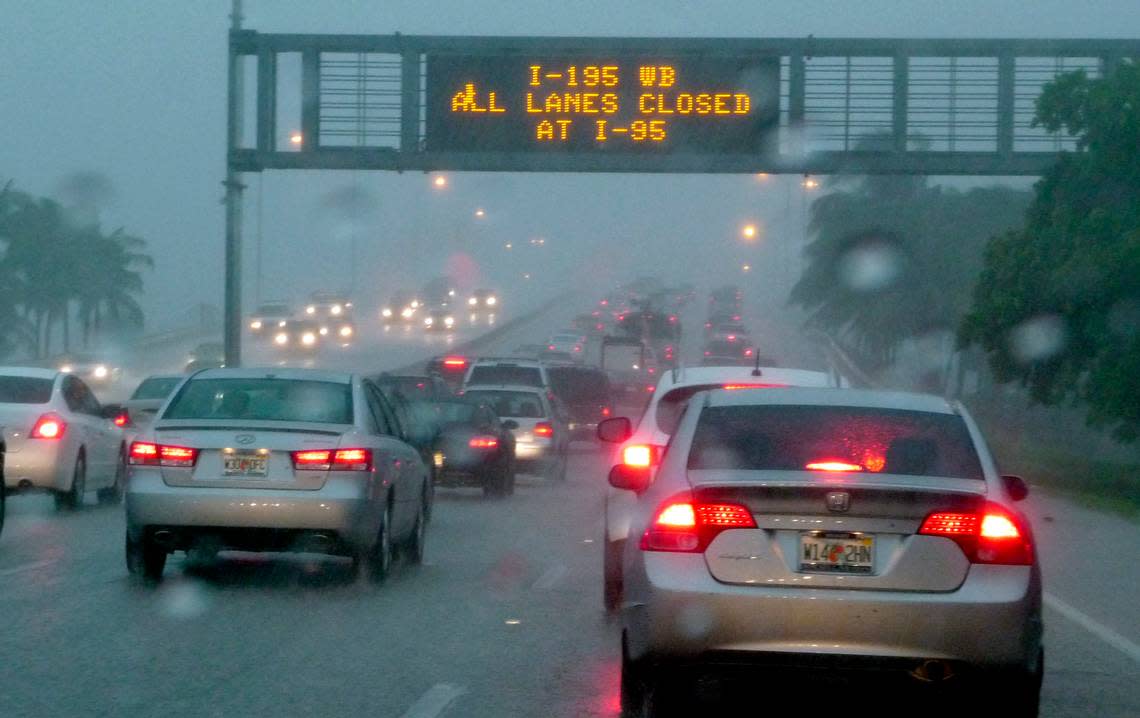You’re not wrong, Miami: Study says we have some of the worst traffic in the world
If you’re thinking that traffic in Miami is worse than it has ever been, you’re not wrong: A new study reports that the Magic City has become one of the worst cities on the planet for traffic congestion.
INRIX, Inc., a transportation data and analytics company in Kirkland, Washington, has released its 2022 Global Traffic Scorecard, and Miami turns out to be one of the top 10 most congested cities in the world.
Now at No. 9 on the list — it jumped from No. 32 in 2021 — Miami is behind only London; Chicago; Paris; Boston; New York City; Bogota; Toronto and Philadelphia (Palermo, Italy, was No. 10). Only Boston, which jumped from No. 18 to No. 4, made a bigger leap percentage-wise in 2022.
To collect data for the annual report, INRIX identifies commute areas within more than 1,000 cities in 50 countries, analyzing travel times and delays, trip characteristics and the impact of incidents on congestion. It adds economic analysis to calculate the cost of time lost to congestion.
Here’s how bad it was: A typical American driver lost 51 hours in 2022 to congestion, the study says, up 15 hours from 2021. That’s still almost 50 percent below pre-pandemic levels. But the typical Miami driver lost 105 hours due to congestion, up 38 hours from 2021, a number that exceeds pre-pandemic levels by 30 percent.
Transportation analyst Bob Pishue, who wrote the report for INRIX, says that the waning of the COVID pandemic in 2022 and a return to the office for many workers is a big part of what caused the shift toward more congestion.
“One of the big drivers is people going back to work,” he said. “It’s a global phenomenon. We’re starting to see telecommuting decrease and hybrid work increase. Even full-time telecommuters in 2021 were back to the office in some capacity this year, though it differs from area to area and industry to industry.”
For Miami, though, he said other factors could be at work, such as migration from other states and an increasing appetite for spending vacations and leisure time in Miami and the Florida Keys. Miami has seen a boom in new restaurant openings, and Michelin stars were awarded to Miami-area restaurants for the first time last year. Also early in 2022, Tripadvisor reported in its Travelers’ Choice Awards that two of the most popular destinations in 2022 were Key West and Miami Beach.
Entertainment and tourism draws make a difference, Pishue said. Nashville, a far smaller city than Miami, has become popular for bachelor and bachelorette trips and other vacations, and it also registered a significant jump in congestion.

“Some of the other things that drive travel are restaurants and nightlife,” Pishue said. “Nightlife and going downtown for things other than commuting were likely causing Nashville to be busier. If there’s some cultural draw, the arts or nightlife, cities built around more than office buildings tend to see more action and more traffic.”
All this traffic costs more than your sanity, too. The INRIX study estimates that congestion caused the average driver in the U.S. $869 in time lost, up from $305 in 2021. In Miami, the average driver lost $1,773 thanks to congestion.
All of this took place in a year during which gas prices reached higher levels than usual in the U.S. Those prices don’t seem to affect driving habits much, Pishue said.
“We looked at fuel prices and what it costs the typical commuter, and what we found is that by and large fuel prices don’t have an outsized effect on the amount people drive,” he said. “People lump in the cost like it’s a utility bill and adjust their budgets accordingly.”
If there’s any bright spot for Miami commuters — and it’s a dim bright spot at best — it’s that no South Florida roads registered on the top 10 list of most congested highways. Four of the top 10 worst roads were in Stamford, Connecticut, while highways in Los Angeles, Boston, New York and Chicago filled out the list. 1-4 East in Orlando was No. 10.
The only other good news to consider requires a change in perspective, Pishue said.
“If people are going out and participating in the local community and economy, congestion doesn’t seem quite as bad in that context,” he said.